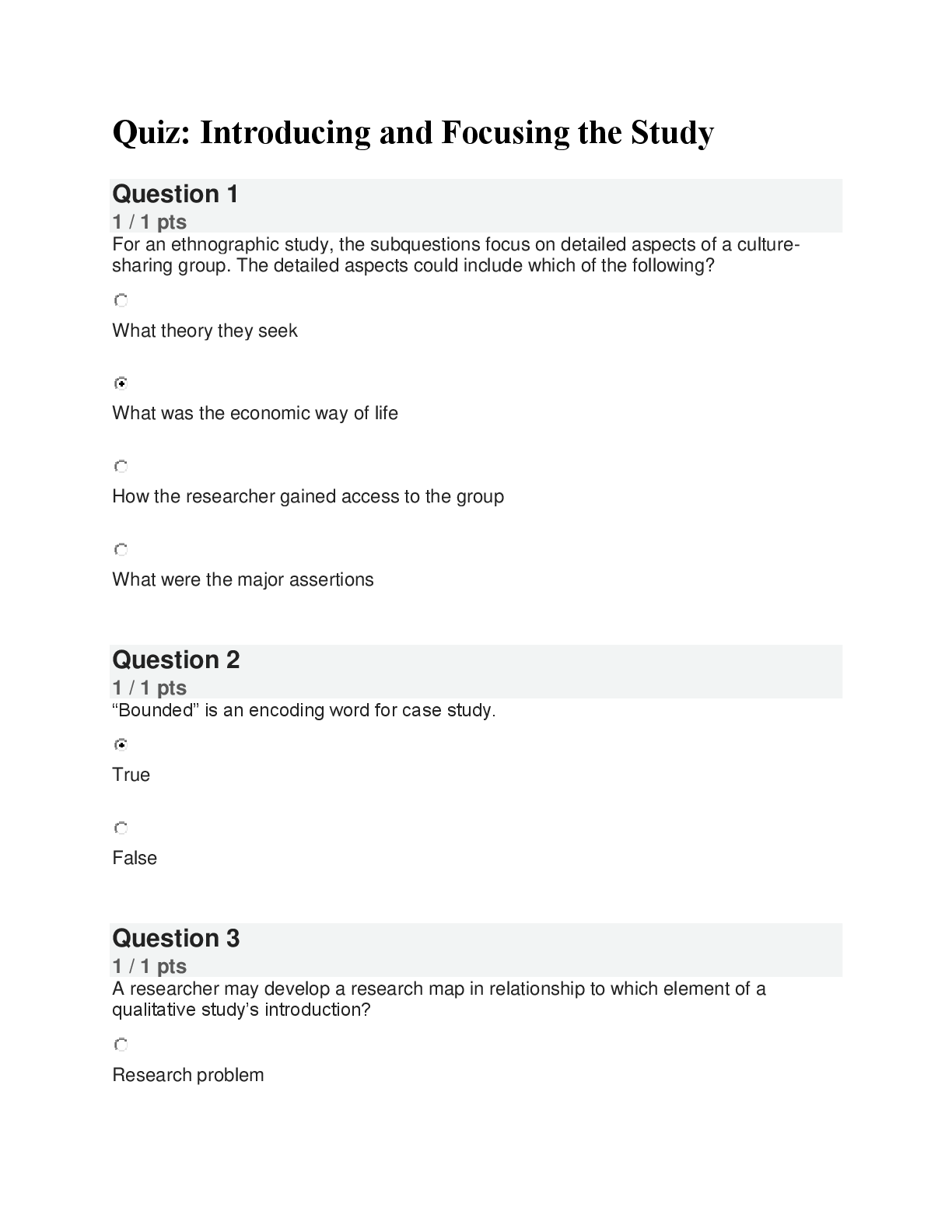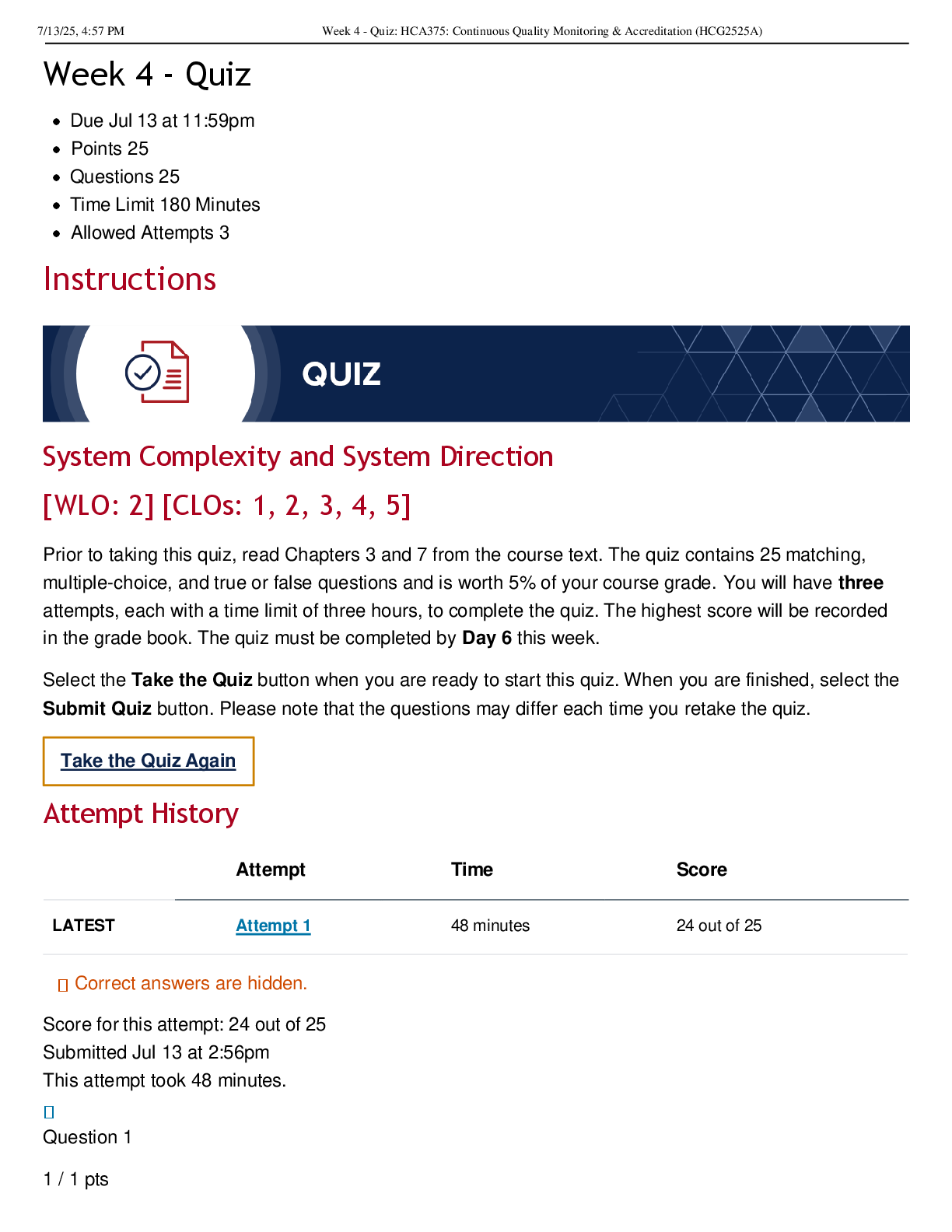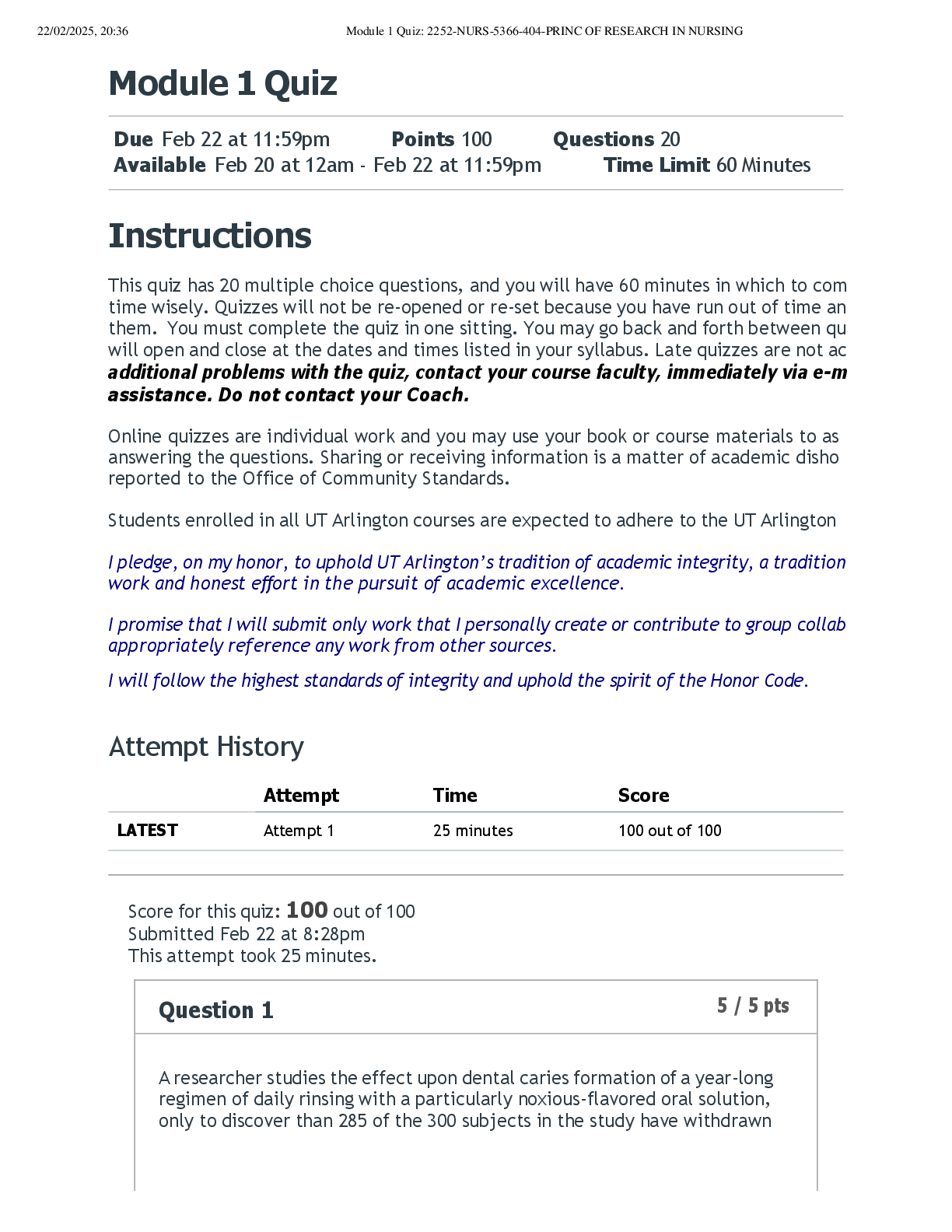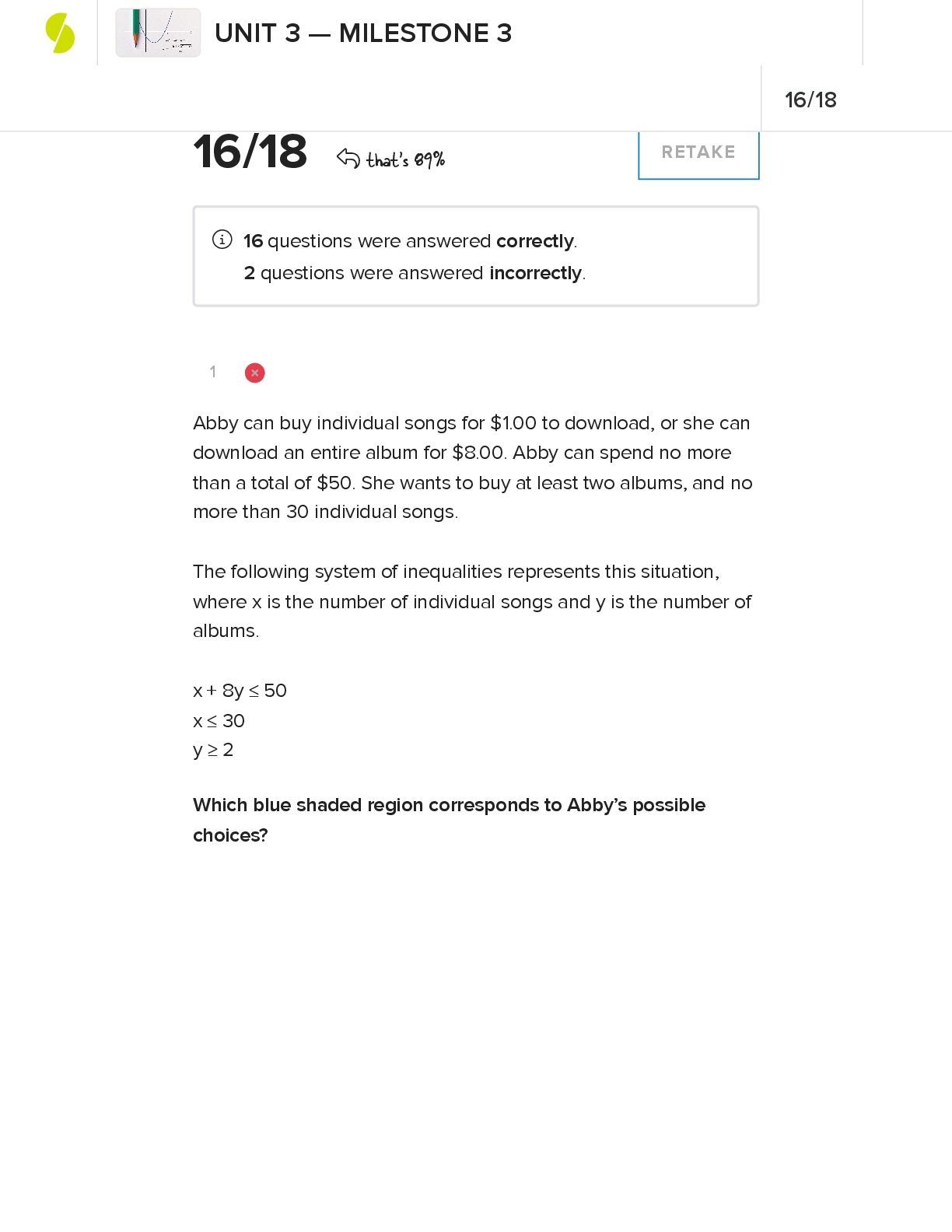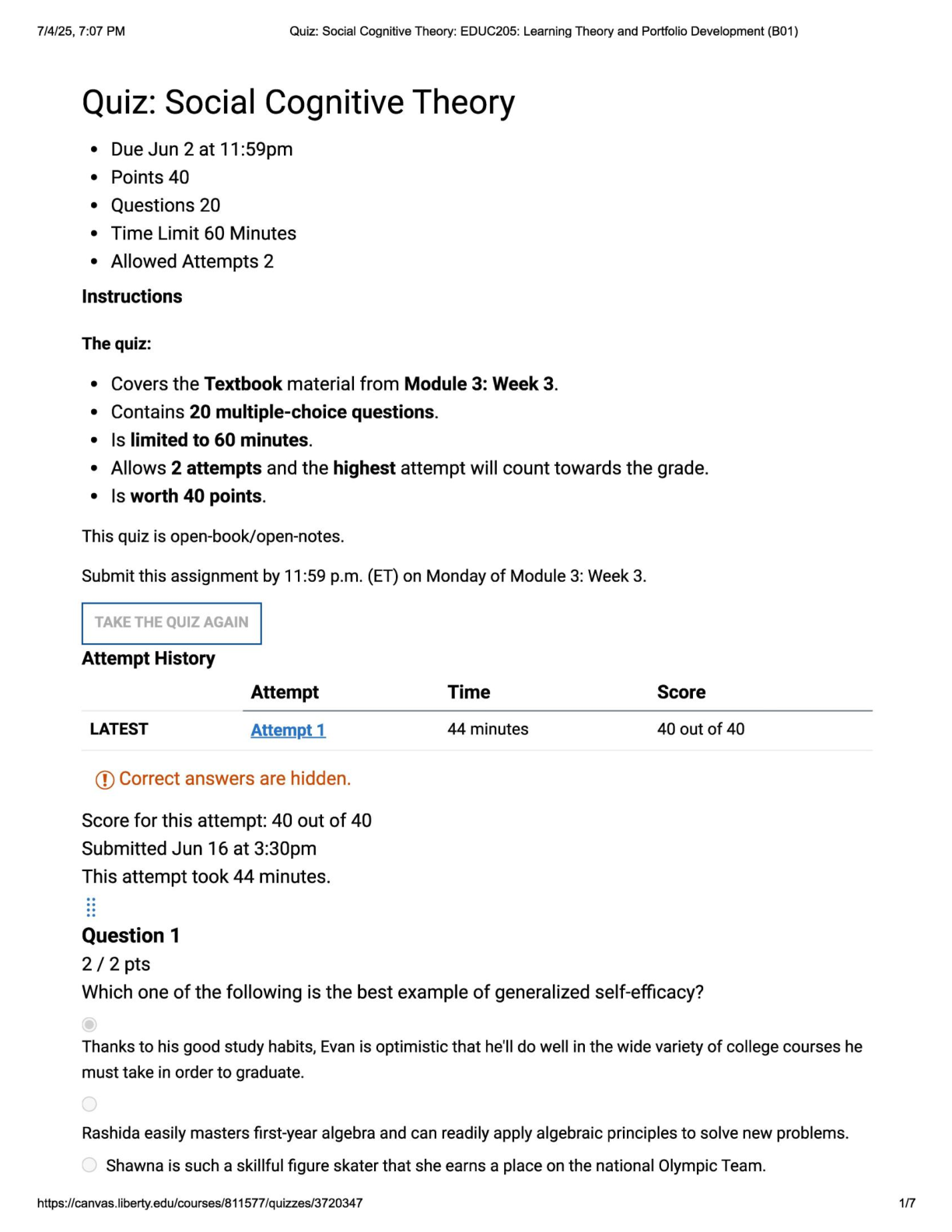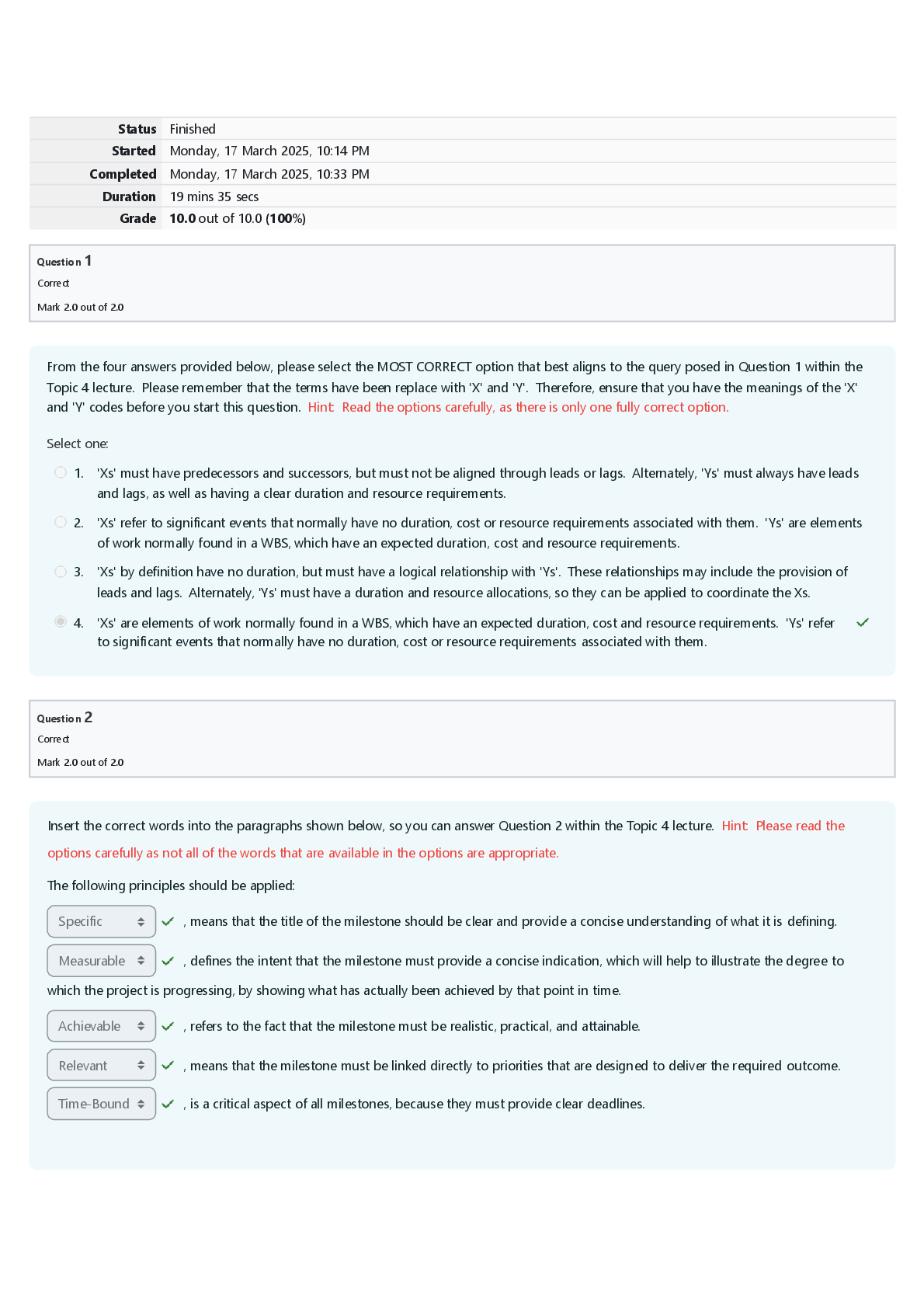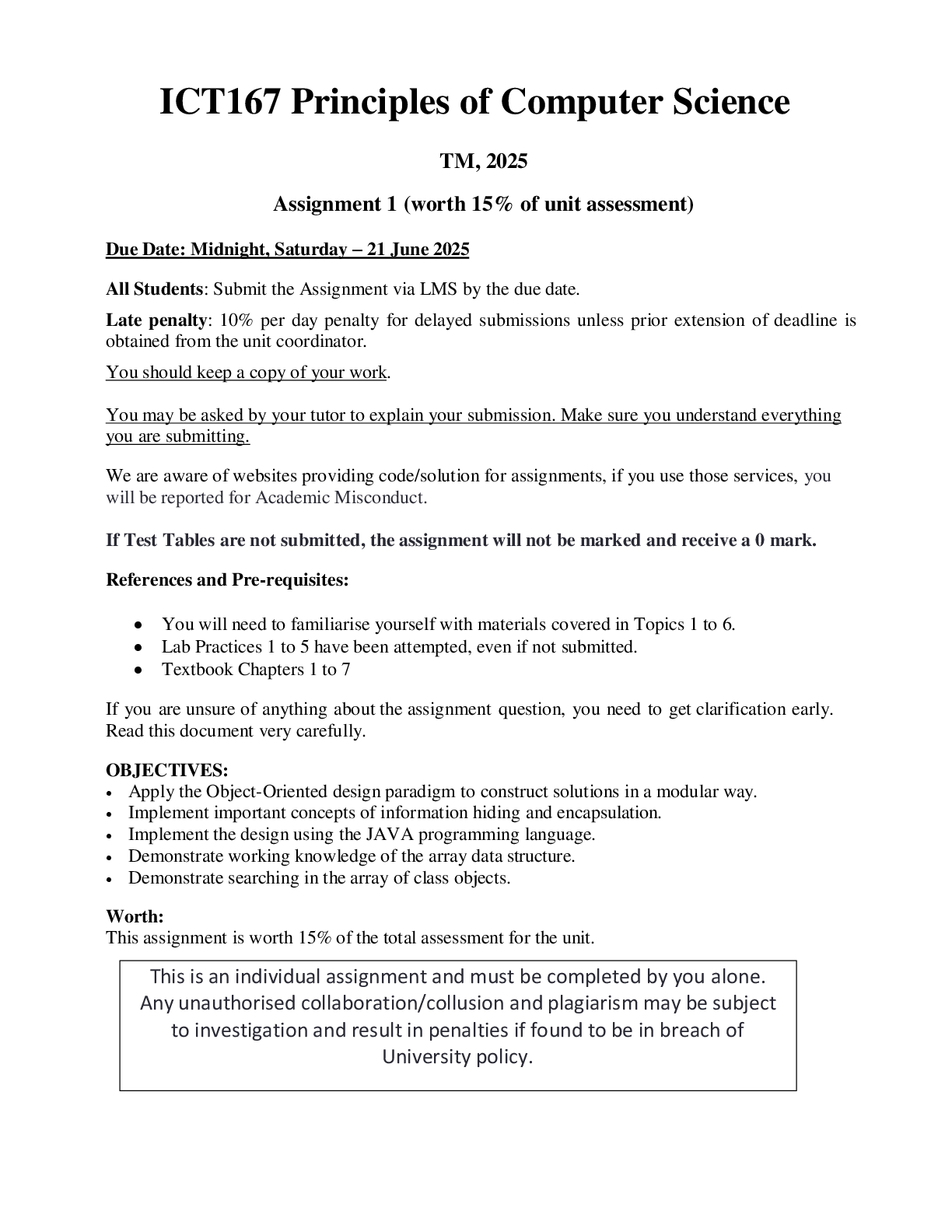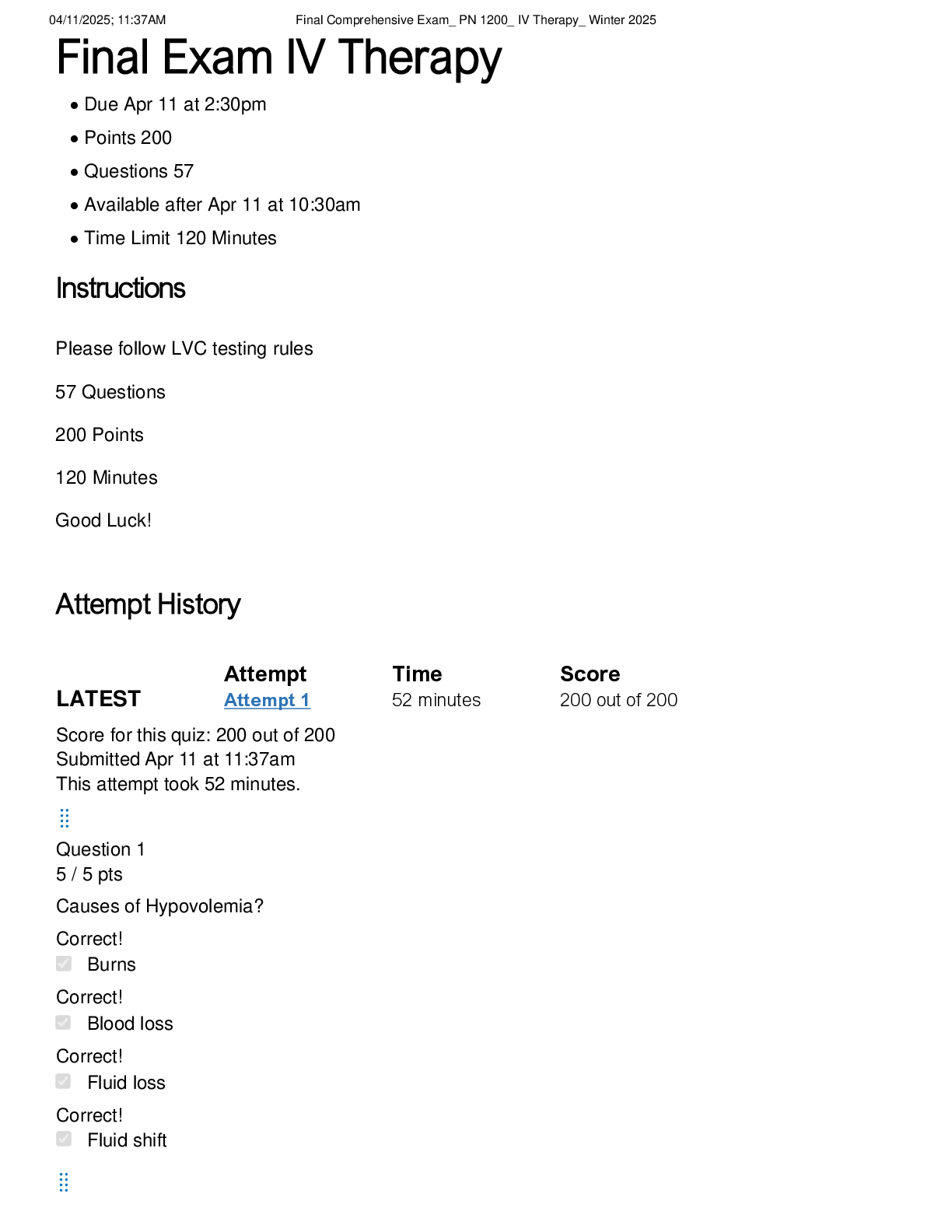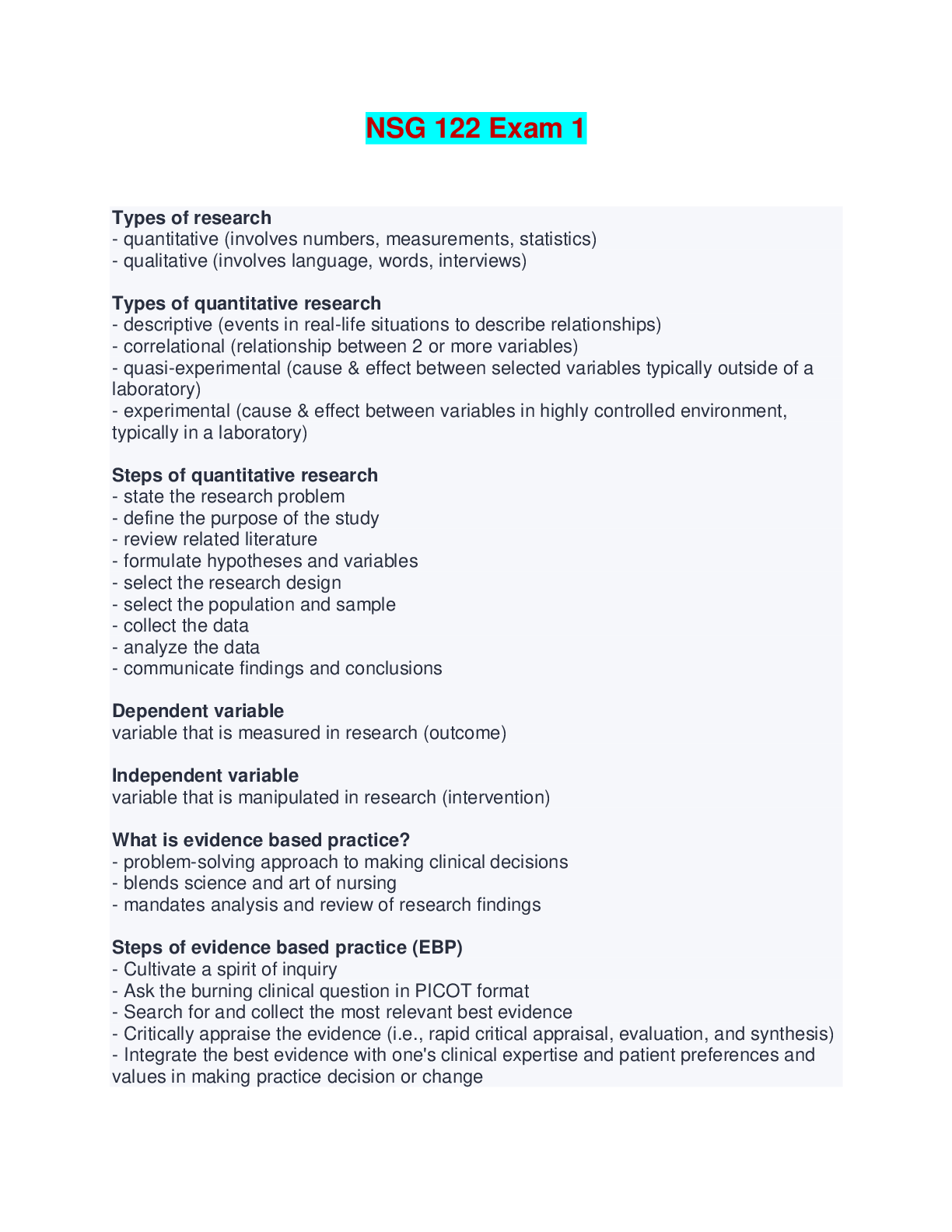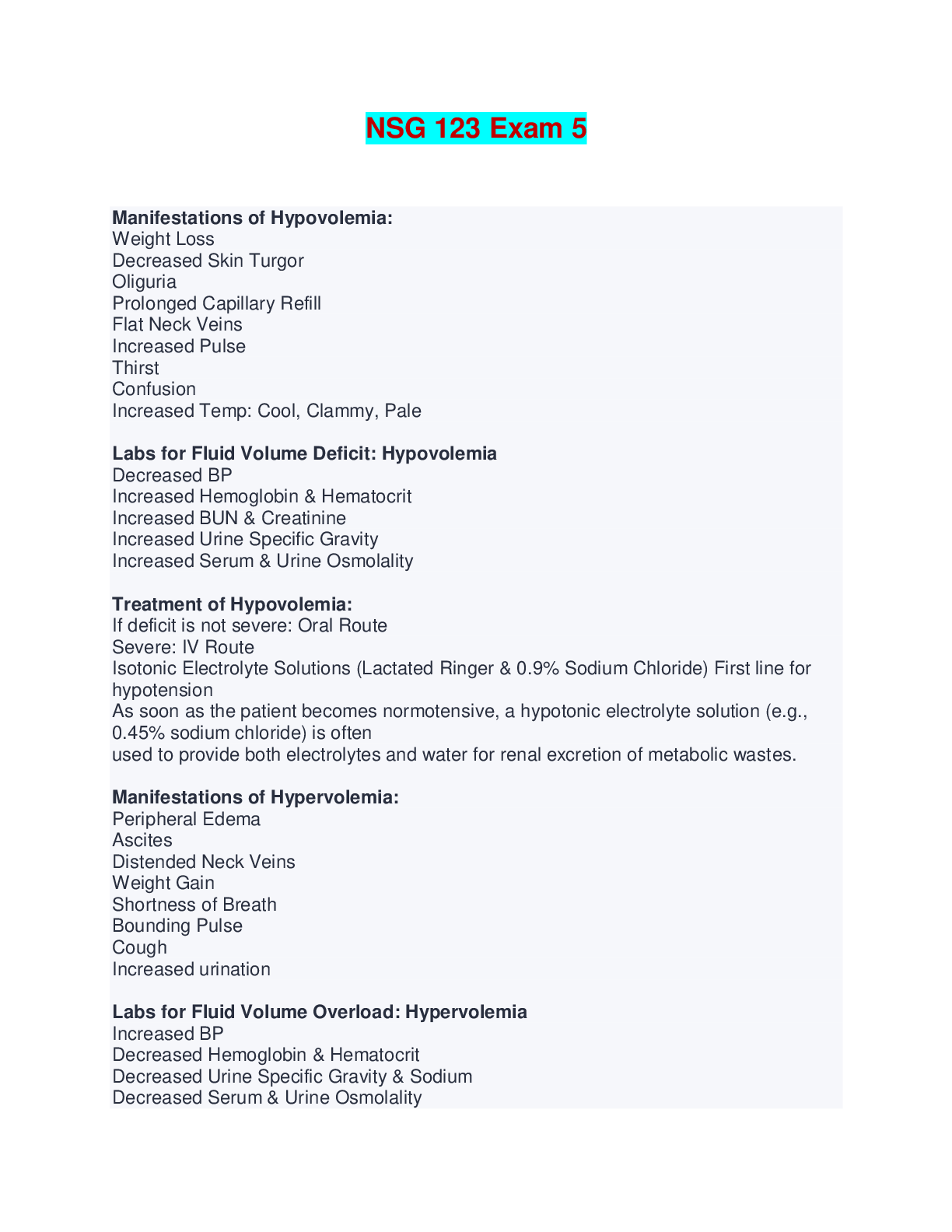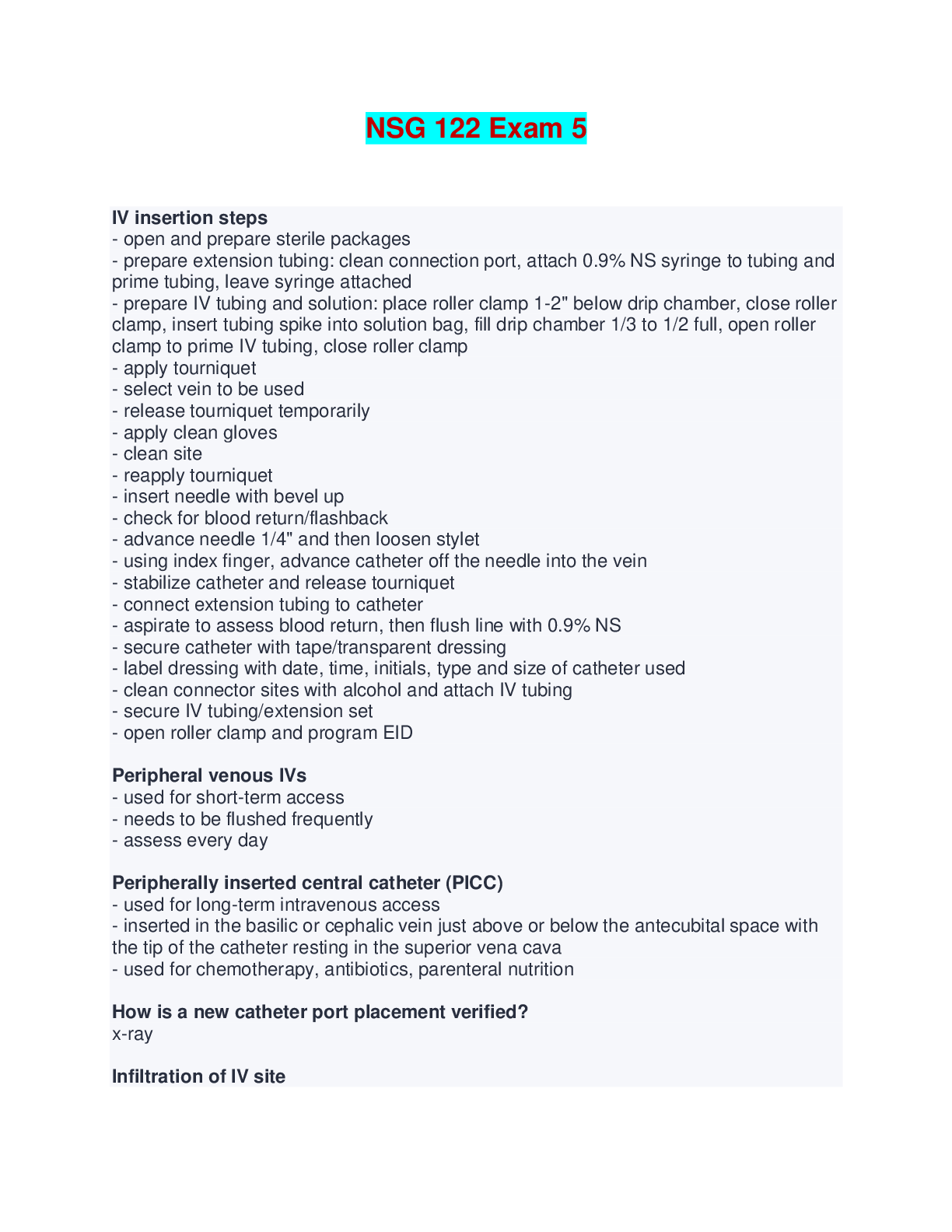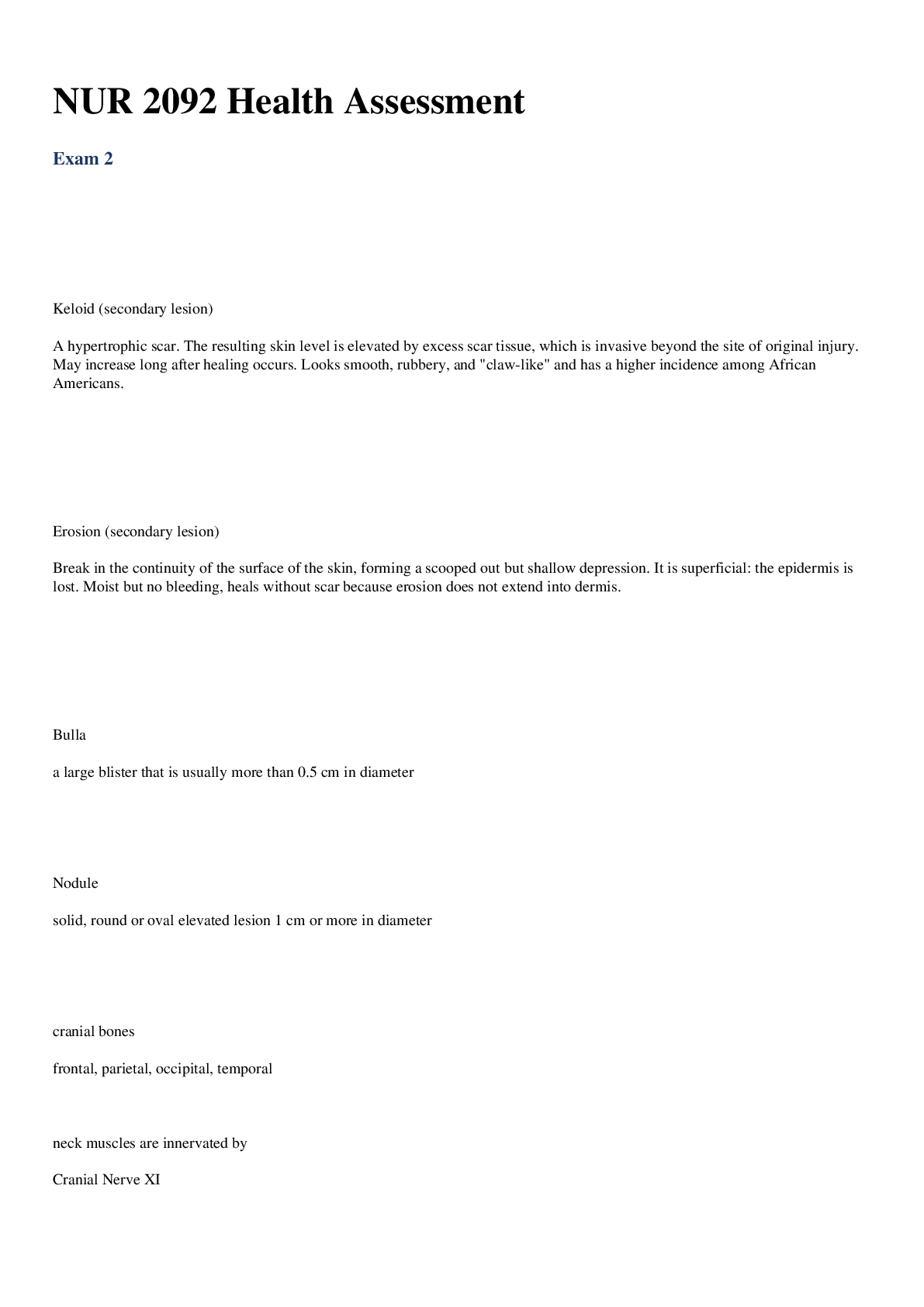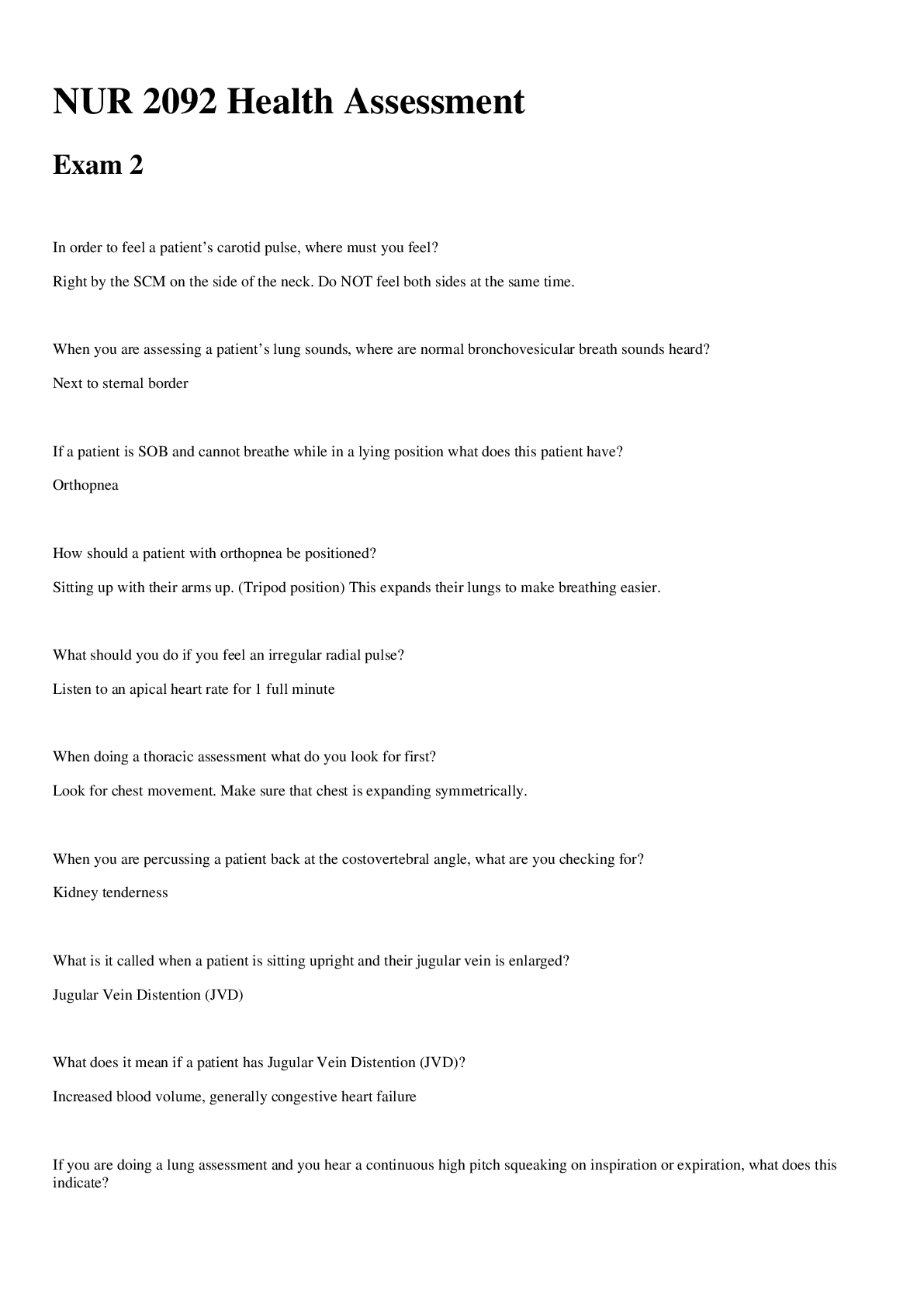NR 302 Health Assessment Exam 1 Review
Document Content and Description Below
NR 302 Health Assessment Exam 1 Review 1. Herpes Simplex - infection has a feeling of skin tingling and sensitivity lesion then erupts with tight vesicles followed by pustules and produces acute ging... vicstromatis with many shallow painful ulcers. 2. Herpes Zoster - small, grouped vesicles emerged along route of cutaneous sensory nerve, then pustules then crusts. Caused by the varicella zoster virus, a reactivation of the dormant virus of chicken pox. 3. Pallor - red-pink tones of the oxygenated hemoglobin in the blood are lost, the skin takes on a color of connective tissue which is mostly white. 4. How to determine pallor on darker skin? - conjunctiva, mucous membrane, and cap refill is greater than 3 seconds. 5. Cyanosis - bluish tone on body from decreased perfusion, the tissues have high levels of deoxygenated blood. best seen on lips, cheeks, ears, and oral mucous membranes. 6. How to determine cyanosis on darker skin? - nails beds will have a bluish tint to them. 7. Erythema - intense redness of the skin is from excess blood (hyperemia) in the dilated superficial capillaries. Blushing in vascular fish areas (cheeks, neck, and upper chest). 8. How to determine erythema on darker skin? - palpate the skin for increased warmth or taut or tightly pulled surfaces that may indicate edema and hardening of deep tissues or blood vessels. 9. Cartoenemia - produces a yellow orange color in light-skinned persons put no yellowing in the sclera or mucous membranes. It happens from investing large amounts of carotene and vitamin A. Best seen on palms, soles, forehead, tip of nose, chin, behind the ears, over the knuckles. Fades to normal within 2-6 weeks after withdrawing from carotene rich foods. 10. Uremia - kidney failure, waste is now in blood stream and seeping out of the skin. Pale yellow with odor. Pruitis will occur along with frost that secretes form the skin and dries up. 11. Jaundice - very yellow skin that indicates rising amount of bilirubin in the blood. Except for physiologic jaundice in newborns. You can find jaundice in the sclera of eyes that extends to the edge of the iris. 12. Petechiae - broken blood vessels which results in a purple or red spot on the skin. 13. How to determine petechiae on dark skin? - Spot on body doesn't blanch. 14. What is edema? - fluid accumulating in the interstitial spaces. It is not present normally. [Show More]
Last updated: 2 years ago
Preview 1 out of 9 pages

Buy this document to get the full access instantly
Instant Download Access after purchase
Buy NowInstant download
We Accept:

Reviews( 0 )
$14.00
Can't find what you want? Try our AI powered Search
Document information
Connected school, study & course
About the document
Uploaded On
Feb 16, 2022
Number of pages
9
Written in
Additional information
This document has been written for:
Uploaded
Feb 16, 2022
Downloads
0
Views
91

